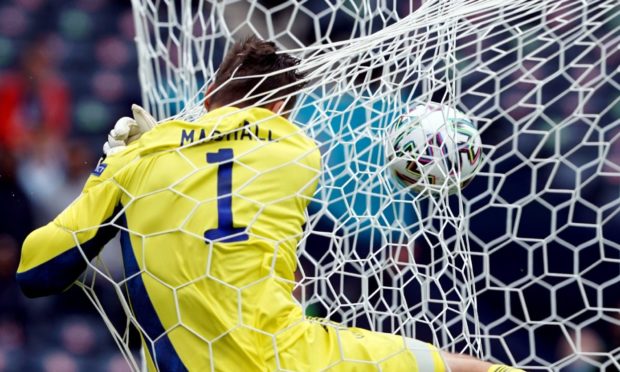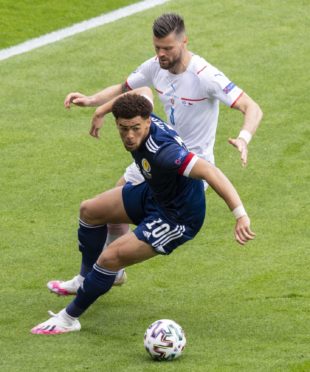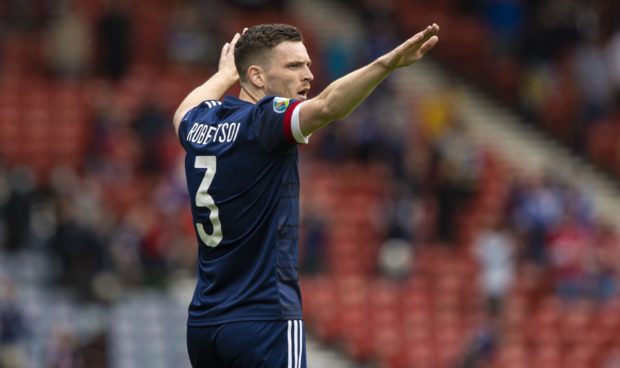This build-up was about the interminable wait and the exhilaration and relief of putting a full stop to it.
It was about a new beginning and boundless possibilities thereafter.
It was about ‘I was there’ over-40s who have suffered because they knew exactly what we’ve all been missing out on for the best part of a quarter-of-a-century.
It was about ‘I should be so lucky’ under-30s innocents who have suffered because they didn’t.
It was about wide-eyed children allowed to finish their day in class in front of a television screen watching football and discovering the beauty of sporting nationhood for the first time rather than working on their times tables.
P1G are ready to support Scotland! 🏴 #wecanboogie pic.twitter.com/QZcqEWbvpI
— Viewlands Primary (@ViewlandsPS) June 14, 2021
It was about parents and grandparents who would get to share that excitement with them when they picked them up at the school gates.
It was about the lucky ones in Hampden Park – the 12,000 who would generate an electric atmosphere to rival the capacity ones of years gone by in the cavernous Hampden Park bowl that holds over four times that number.
The build-up to Scotland’s re-emergence into international football relevance didn’t disappoint. How could it?
Goosebumps 😍🎶🏴
📲📺 Watch: https://t.co/gH42HDCam6#SCO #CZE #bbceuro2020 #euro2020 pic.twitter.com/qUHW02TO2V
— BBC Sport Scotland (@BBCSportScot) June 14, 2021
But it would be the dark blue v white bit on the grass that would determine whether this was truly an occasion to be cherished.
And on that front, the one that really mattered, it was all about bad decisions.
You can start with Steve Clarke.
Yes, losing Kieran Tierney to a minor injury was unfortunate but there were a few other selection decisions under his control that needed to pay off. And, for once, I’ll leave Stephen O’Donnell’s inclusion alone.
Lyndon Dykes with Ryan Christie just off him didn’t work and neither did the midfield trio of John McGinn, Scott McTominay and Stuart Armstrong.
That there was a half-time substitution was an admission by Clarke that he got it wrong.
Che Adams should have been one of the first names on the team sheet, not a first change off the bench.
The tactics of by-passing that midfield (of three English Premier League starters, let’s not forget) didn’t work either.
The set-up and strategy felt like one for a game where a draw was the aim rather than a victory.
Four points will get you into the last 16 but this was the likeliest opportunity to take a chunk of three out of that target.
Those poor decisions before the game were infectious during it.
Andy Robertson – far and away Scotland’s man of the match it must be stressed – chose the wrong option with Scotland’s best chance of the first half.
He went high with a shot when Hampden opened up for him.
He should have gone low.
Before that there was the sight of Christie beating two men and then being tackled by one from his own side, O’Donnell.
Armstrong and McTominay getting in each other’s way at the edge of their own box wasn’t much easier on the eye.
It was the sort of big-game anxiety that you fear.
No wonder Robertson was imploring those around him to settle down.
For all that, the match was an evenly balanced one, even after Patrick Schick gave the Czech Republic a one-goal lead with as good a header from eight yards out from an out-swinging cross as you’re likely to see all tournament.
But back to those bad decisions and the two which put this match beyond Scotland’s reach and provided a haunting few seconds of football.
Jack Hendry probably shouldn’t be trying a shot from about 40 yards out when most of his team-mates are in front of him.
But David Marshall definitely shouldn’t be wandering up towards the centre-circle when the ball is in midfield.
I’m no goalkeeping expert but good luck finding one who suggests that this was within 20 yards of an advisable starting position.
That Schick had the vision and skill to brutally expose this lapse of concentration by Marshall is a credit to a fine player but as soon as he latched on to the loose ball you knew something had gone awry with the Scotland keeper’s compass.
The Czech Republic's wonder goal analysed….
📲💻📺 Reaction: https://t.co/gH42HDCam6#bbceuro2020 #euro2020 pic.twitter.com/jLFCPMDd5t
— BBC Sport Scotland (@BBCSportScot) June 14, 2021
He made some outstanding saves either side of that goal – there were at least five – but those are the rules for goalies.
If you end up on a slow motion run back into your box and then lying on the ground in the back of the net as the ball sails over you, nobody will remember a few decent near post blocks.
By the end there were five Scotland subs on the pitch (inexplicably, Billy Gilmour wasn’t one of them) and Clarke’s men were undoubtedly unlucky that several near-things didn’t produce a goal.
But the match had its defining image and only a famous night at Wembley and/or an against the odds progression to the knock-out stage will prevent David Marshall getting tangled in his netting from being the defining image of Scotland’s Euro 2020 Championships.


